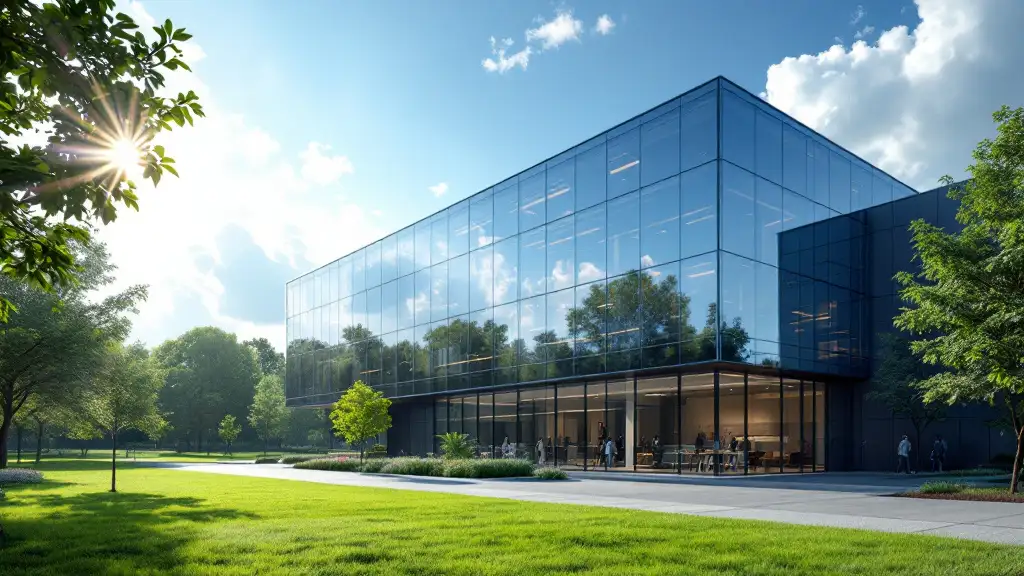Autistic Brain vs Normal Brain
Understanding the Structural and Functional Brain Variations in Autism Spectrum Disorder
Autism Spectrum Disorder (ASD) is characterized by a complex interplay of neurodevelopmental variations that influence behavior, cognition, and social interaction. Advances in neuroimaging, genetic research, and postmortem studies have revealed significant differences in the brain architecture of autistic individuals compared to neurotypical populations. This article explores the structural and neurobiological underpinnings of autism, examining how these differences manifest during development and influence behavior.
Neuroanatomical Differences in Autism Spectrum Disorder

How do autistic brains differ structurally and neuroanatomically from neurotypical brains?
Autistic brains show several distinct structural and neuroanatomical features compared to typical development. One prominent characteristic is early brain overgrowth, particularly evident during childhood, with increased volumes in areas such as the frontal cortex, amygdala, and hippocampus.
Specific regions often exhibit abnormalities. For instance, the cerebellum may display decreased grey matter volume and a loss of Purkinje cells, which are vital for motor control and cognitive functions. The corpus callosum, the bundle of nerve fibers connecting the two hemispheres, frequently shows reduced size, suggesting disrupted interhemispheric communication.
On a microscopic level, alterations include focal disorganization of neuronal patterns, reduced spacing of cortical minicolumns, and atypical connectivity — with increased short-range and decreased long-range connections. These variations in brain architecture influence behavioral traits such as social interaction difficulties, communication challenges, and repetitive behaviors.
How does brain development differ in individuals with autism compared to neurotypical development?
In early childhood, brain development in autistic individuals follows a distinctive trajectory. There is often a rapid, early overgrowth in key regions like the frontal and temporal lobes, amygdala, and hippocampus, beginning around 6 months and peaking in the second year. This accelerated growth phase results in larger brain sizes compared to neurotypical peers.
Following this period, the growth slows down or plateaus, leading to a divergence from typical development patterns. These atypical trajectories are linked to differences in cortical thickness, white matter integrity, and neural connectivity.
As a result, the neural networks involved in social, sensory, and cognitive processes are affected, contributing to the core features of autism. Variations are also observed between sexes, with some evidence pointing to more pronounced differences in certain brain regions among autistic girls. The overall picture underscores that autism involves fundamentally different neurodevelopmental pathways during critical growth periods.
| Aspect | Typical Development | Autism Spectrum Disorder | Neural Implication |
|---|---|---|---|
| Brain overgrowth | Gradual, controlled increase in volume during childhood | Early rapid growth, especially in frontal and temporal lobes | Disrupted synchronization and connectivity |
| Cortical thickness | Stable or gradually changing | Variations, often with thicker or thinner regions | Potential impact on processing speed and integration |
| White matter | Consistent development of inter- and intra-hemispheric tracts | Altered integrity, with changes in key pathways | Affects communication between brain regions |
| Regional volume | Balanced growth across regions | Asymmetric and region-specific variances | Underlies social and cognitive symptoms |
These structural differences are foundational to understanding autism's neurobiological basis. They are detectable through advanced imaging techniques like MRI, revealing how early developmental divergence shapes ongoing neural function.
Microstructural Variations in the Autistic Brain

What are some key microstructural variations in the brains of individuals with autism?
Autistic brains exhibit several notable microstructural differences compared to neurotypical brains. These include variations in neuron size, density, and organization within specific cortical areas. For instance, some regions show lower neuron density, which can impact the processing capabilities of those areas. Additionally, the organization of neurons often appears altered, with irregular laminar patterns and focal disorganization, affecting how neural circuits are formed.
Imaging studies using advanced MRI techniques reveal changes in cortical volume and thickness, particularly in areas like the orbitofrontal cortex and lingual gyrus. Such structural differences are linked to behaviors characteristic of autism, such as social difficulties and sensory processing issues.
White matter microstructure also shows significant variations. Key white matter tracts like the inferior longitudinal fasciculus, superior longitudinal fasciculus, and cingulum display reduced fractional anisotropy and connectome density, especially during adolescence and adulthood. These metrics indicate disrupted integrity and organization of neural pathways.
Furthermore, advanced diffusion MRI techniques shed light on alterations at a cellular level, revealing differences in neurite density and orientation dispersion. These suggest a disrupted neural organization, impacting how information is communicated across the brain.
The properties of white matter axons, including the g-ratio—a measure of the ratio between axon diameter and myelination—show deficits in ASD. Axonal diameter and myelination deficits contribute to slower conduction velocities, impairing neural communication and possibly underpinning cognitive and behavioral features of autism.
What genetic and molecular factors contribute to brain differences in individuals with autism?
The neurobiological landscape of autism is heavily influenced by genetic and molecular factors. Over 1000 genes have been implicated, many involved in synapse formation, neural growth, and neurotransmission. Notable examples include CHD8, PTEN, CNTNAP2, and SLC6A4. Variations in these genes can disrupt critical neurodevelopmental pathways such as the mTOR signaling pathway, GABAergic system, and calcium channel functions.
Genetic disruptions often result in structural brain differences, such as altered gray and white matter volumes, as well as atypical cortical development patterns. These variations are observable through neuroimaging and postmortem studies, which show abnormal growth or reduction in key regions like the amygdala, hippocampus, and frontal lobes.
Twin studies underscore the high heritability of these neuroanatomical features, emphasizing a strong genetic component. Gene expression analyses reveal that cortical complexity and connectivity issues are linked to genes involved in synaptic transmission, mitochondrial activity, and chromatin organization.
Beyond genetic factors, epigenetic modifications and immune-related proteins also influence brain development. Changes in these molecular factors can affect neural proliferation and connectivity, contributing further to the structural differences seen in individuals with autism.
| Neurostructural Variations | Affected Brain Regions | Functional Implications |
|---|---|---|
| Neuron density differences | Cortical areas, hippocampus | Learning, memory, reasoning |
| White matter tract alterations | Corpus callosum, fasciculi | Neural communication efficiency |
| Cortical gyrification | Orbitofrontal, lingual gyrus | Sensory processing, social cognition |
| Axonal properties and myelination | Multiple white matter tracts | Brain connectivity speed |
| Genetic factors | Various genes (e.g., CHD8, PTEN) | Brain growth and circuit formation |
Understanding these microstructural and molecular differences helps in unraveling autism’s complexity, paving the way for more targeted interventions and diagnostics.
Differences in Brain Development Trajectories in Autism

How does brain development differ in individuals with autism compared to neurotypical development?
Brain development in individuals with autism presents a distinctive pattern, especially during early childhood stages. Research indicates that autistic children often experience a rapid increase in brain volume and growth of specific regions, notably the frontal and temporal lobes, amygdala, hippocampus, and cerebellum, beginning around 6 months and peaking between 12 to 24 months of age. This early overgrowth contrasts with typical development, where such rapid growth is less pronounced.
Following this initial burst, many autistic children encounter a slowdown or stagnation in brain growth during later childhood and adolescence. This altered trajectory is believed to lead to atypical neural connections, variations in cortical thickness, and decreased white matter integrity. These neuroanatomical differences impact functional connectivity, which can influence language, social behavior, and cognitive skills.
Further, studies suggest that sex-specific differences might influence these overgrowth patterns, contributing to variability in autism presentations. During these critical periods of development, the unusual growth patterns may underpin many core features of autism, including social difficulties, restricted interests, and sensory sensitivities.
How do the structural differences contribute to behavioral and cognitive traits?
The physical changes in brain structure observed in autistic individuals—such as early overgrowth, disrupted white matter pathways, and differences in cortical thickness—are closely linked to behavioral and cognitive features of autism. For example, overgrowth in the frontal cortex impacts executive functions like planning, flexibility, and problem-solving.
Variations in the size and growth of the amygdala are associated with the processing of emotions and social cues, often resulting in challenges with emotional regulation and social interactions.
The cerebellum, which is vital for coordination and motor control, shows decreased volume in autism, correlating with motor difficulties and repetitive behaviors.
These structural deviations are thought to influence core autism symptoms, including repetitive behaviors, social communication deficits, and sensory processing issues. The brain's early developmental trajectory, thus, plays a critical role in shaping the cognitive and behavioral landscape observed in autism spectrum disorder.
Functional and Physiological Variations in the Autistic Brain
How do autistic brains process information differently compared to a neurotypical brain?
Autistic brains tend to process information in a distinct manner. They often handle details more intensely and quickly, taking in vast amounts of data simultaneously. This is partly due to differences in filtering mechanisms within the brain, which lead to a focus on specific interests and minute details.
This hyper-focus can make it challenging to see the big picture, affecting the ability to form complex associations vital for understanding social cues and broader contexts. The result can be sensory overload, causing feelings of being overwhelmed or anxious, and sometimes leading to meltdowns.
Despite these challenges, many autistic individuals excel at rapid and detailed tasks, reflecting a heightened perceptual capacity. However, processing speeds in certain areas related to social communication may be slower, which can contribute to difficulties in social interactions.
Overall, their unique processing style combines strengths in attention to detail with challenges in integrating information across different domains, especially in social and contextual understanding.
Are there identifiable brain scans that distinguish autistic brains from neurotypical brains?
Yes, advanced neuroimaging techniques have made it possible to identify differences in brain structure and activity between autistic and neurotypical individuals. These differences include variations in brain size, connectivity patterns, and specific neural region functions.
Research shows that many children with autism have larger brains early in development, with abnormal growth patterns in white matter and key neural circuits pertinent to sensory input and social cognition.
A breakthrough in understanding the neurobiology of autism is the measurement of synaptic density using positron emission tomography (PET) scans. Recent studies show that autistic adults have approximately 17% fewer synapses across the entire brain compared to neurotypical peers. This lower synaptic density correlates with core autistic features like reduced eye contact, repetitive behaviors, and social communication challenges.
Functional MRI studies further reveal altered responses to social and biological stimuli. For example, differences in activity when processing social cues or language, and abnormal connectivity in circuits involved in language and social integration, are evident.
These neuroimaging markers help in distinguishing autistic brains from neurotypical ones and facilitate personalized approaches to intervention and therapy.
| Aspect | Difference Observed | Implication |
|---|---|---|
| Brain Size | Larger early in life, variable in adulthood | Affects processing speed and development |
| Synaptic Density | 17% lower in autistic adults | Linked to social and behavioral traits |
| Connectivity | Variations in short- and long-range networks | Responsible for sensory, social, and cognitive functions |
| Brain Regions | Altered activity in social and sensory areas | Underpins social difficulties and sensory sensitivities |
Summarizing the Emerging Scientific Picture of Autism Brain Differences

What does current research say about brain differences in autism, including recent scientific findings?
Recent scientific discoveries reveal that autism spectrum disorder (ASD) involves a broad spectrum of neurodevelopmental differences that affect the structure and connectivity of the brain. These changes are extensive and demonstrate that autism is not rooted in isolated regions but involves widespread neural network modifications.
One of the prominent findings is the alteration in neuroanatomy, including increased symmetry between the brain hemispheres, although this stand-alone feature is not diagnostic. Structural variances such as heightened folding (gyri and sulci) in specific regions—like the left parietal and temporal lobes and the right frontal and temporal areas—may influence neuronal connections and processing. There is also evidence of early overgrowth of the frontal cortex during postnatal development and abnormal patterns in the amygdala and hippocampus, which are pivotal for emotion and memory.
Neuroimaging studies using advanced techniques like diffusion MRI and functional MRI have uncovered atypical connectivity patterns. These include an excess of short-range connectivity and a deficit in long-range connections that normally facilitate integrated brain function. Such disparities can impact complex cognitive and social behaviors characteristic of ASD.
Recent molecular and cellular insights further enhance this picture. Notably, cutting-edge PET scan studies have measured synaptic density directly in living individuals. These investigations showed that autistic adults have approximately 17% lower synaptic density across the brain compared to neurotypical counterparts, aligning with observed behavioral traits such as reduced eye contact and social engagement. Moreover, research on neuron density highlights lower neuron counts in the cortex, affecting reasoning, learning, and memory, while increased neuron density within the amygdala relates to emotional processing differences.
Genetic studies contribute additional layers of understanding by identifying gene expression changes in the brain's superior temporal gyrus—a region involved in language and social perception. These genes are often linked to inflammation, immune response, and neural transmission, with their expression patterns evolving across the lifespan. For instance, certain genes involved in GABA synthesis, essential for inhibitory neural signals, tend to decrease with age in autistic brains, possibly underpinning some behavioral symptoms.
Further, research on diverse age groups and populations shows that early brain overgrowth, particularly in the cortex, is common in autistic children, often accompanied by enlarged cerebrospinal fluid spaces and variable amygdala sizes. White matter alterations, including differences in fiber tracts like the corpus callosum, are evident from toddlerhood through adolescence, affecting inter-regional communication.
In the realm of genetics and gene expression, studies have identified hundreds of genes with altered activity in the autistic brain. These genes often relate to synaptic development, immune responses, and signaling pathways, which are crucial for normal brain maturation. The dysregulation can be age-dependent, with specific patterns emerging during childhood and adulthood.
Cutting-edge research also indicates that autism encompasses distinct subtypes with unique neural connectivity profiles. For example, some subgroups display increased connectivity linked with visual processing deficits, while others show different patterns associated with social or repetitive behaviors. These classifications are reinforced by genetic and behavioral data, paving the way for more personalized approaches.
Overall, the current scientific picture portrays autism as a condition involving complex, large-scale alterations in brain architecture and function. These include deviations in cortical growth, neuron and synapse densities, regional activity, and connectivity pathways. The integration of molecular, cellular, and neuroimaging findings underscores that autism involves a constellation of neurobiological differences, which evolve across development and contribute to the diverse behavioral profiles observed in individuals.
| Aspect | Key Findings | Implications |
|---|---|---|
| Structural Variations | Increased sulci, early overgrowth of cortex, altered amygdala/hippocampus size | Affects information processing and emotion regulation |
| Connectivity | Increased short-range, decreased long-range connectivity | Disrupts integrated neural functions |
| Neuron/Synapse Densities | Lower cortical neurons, higher amygdala neurons, reduced synapses | Influences learning, memory, emotional responses |
| Gene Expression | Alterations in genes involved in immunity, neural signaling | Guides understanding of developmental pathways |
| Brain Development | Rapid cortical growth in infancy, variable white matter tracts | Affects developmental timing and behavioral outcomes |
| Subtypes | Distinct connectivity and behavioral profiles | Promotes personalized intervention strategies |
These findings collectively advance the understanding of autism as a spectrum of neurobiological conditions characterized by widespread, multi-level brain differences. Ongoing research aims to unravel these complex interactions further, promising more effective diagnostics and targeted therapies.
Towards a Comprehensive Understanding of Autism's Neural Basis
The processing differences and structural variations identified in autistic brains highlight a neurobiological foundation that underpins the diverse behavioral expressions of autism. While early brain overgrowth and region-specific connectivity disruptions are hallmark features, ongoing research into molecular mechanisms, genetic influences, and microstructural properties continues to refine our understanding. This evolving knowledge base not only illuminates the neural architecture of autism but also paves the way for targeted, personalized interventions. Recognizing autism as a variation in brain structure and function underscores the importance of neurodiversity and emphasizes the need for continued scientific inquiry into the intricacies of the autistic brain.
References
- Autism Spectrum Disorder: Autistic Brains vs Non ... - Health Central
- A Key Brain Difference Linked to Autism Is Found for the First Time ...
- New Autism Research Finds That Autistic Brains Are Differently Wired
- The neuroanatomy of autism – a developmental perspective - PMC
- UC Davis study uncovers age-related brain differences in autistic ...
- Study Reveals Differences in Brain Structure for Older Autistic Adults
- Four Different Autism Subtypes Identified in Brain Study | Newsroom
- Comparing Aspergers Brain Vs Normal Brain
- Brain structure changes in autism, explained | The Transmitter
Other articles
Recent articles

How Schools Can Support Autistic Students In Career Prep

Best Strategies For Autism-Friendly Event Planning

Understanding Noncontingent Reinforcement In Autism Behavior Plans

How Drama Therapy Benefits Autistic Individuals

Best Practices For Autism-Friendly Fitness And Recreation Centers

Best Ways To Promote Healthy Social Media Use For Autistic Teens

How To Help Autistic Children Cope With Public Speaking

Autism And Strategies For Managing Unexpected Changes

Best Podcasts About Autism For Parents And Educators

Autism And The Impact Of Seasonal Changes On Behavior

The Role Of Diet In Managing Co-Occurring Conditions With Autism

Sleep Challenges In Autism And Practical Solutions

Best Ways To Build Daily Routines For Autistic Children

Best Practices For Supporting Autistic Entrepreneurs

Autism And Strategies For Navigating Large Social Gatherings

Adaptive Sports And Recreational Activities For People With Autism

Autism And The Benefits Of Story-Based Learning Activities

Understanding The Role Of Play In Autism Development

Autism And The Impact Of Environmental Noise On Learning

How To Create Autism-Friendly Community Spaces

Autism And Chronic Health Conditions: What To Know

The Role Of Care Managers In Autism Life Planning

How To Teach Social Boundaries To Autistic Children

How Autistic Individuals Experience Empathy Differently

How To Support Autistic Employees In Remote Work Settings

Autism And The Relationship Between Motor Skills And Learning

How To Create Community Resource Guides For Autism Families

How To Teach Daily Living Skills To Autistic Teens

Autism And The Impact Of Mind-Body Practices On Stress Reduction

Autism And The Benefits Of Outdoor Group Activities

How To Create Autism-Friendly Sensory Paths In Schools

Best Practices For Autism-Friendly Park And Recreation Areas

Autism And Strategies For Reducing School Refusal

Supporting Autistic Individuals In Public Speaking

The Role Of Diet In Managing Autism Symptoms

The Benefits Of Gardening Clubs For Autism Social Development

How To Prepare Autistic Children For Dental Visits

Autism And Employment: Career Paths That Work

Best Practices For Autism-Friendly Hotels And Lodging

The Impact Of Screen Time On Autism Development

Autism Screening Tools For Early Childhood

The Role Of Physical Exercise In Autism Therapy

Best Strategies For Supporting Autistic College Students

The Role Of Technology In Autism Early Detection

Sensory-Friendly Classroom Design Ideas For Autistic Students

The Role Of Speech Therapy In Building Social Communication Skills

Best Strategies For Handling Autistic Burnout In Adults

Autism And The Importance Of Predictability In Routine

Autism And Peer Education: Teaching Acceptance In Schools

Best Practices For Sensory-Friendly Libraries And Reading Rooms

Self-Advocacy Skills For Autistic Adults

The Role Of Technology In Autism Peer Communication

Promoting Physical Activity In Children With Autism

How To Prepare Autistic Children For Medical Procedures

The Role Of Social Media In Autism Advocacy And Awareness

The Impact Of Sensory Rooms In Public Facilities For Autism

How To Create An Autism-Friendly Holiday Celebration

Best Practices For Inclusive Education For Autistic Students

Autism And Mental Health: Recognizing Signs Of Distress

Best Practices For Sensory-Friendly Waiting Rooms

The Role Of Teachers In Early Autism Red Flag Identification

Autism-Friendly Housing Design Features

Autism-Friendly Housing Design Features

How Environmental Modifications Improve Autism Outcomes

Autism And Technology-Based Learning Tools

Supporting Autistic Children Through Changes In Routine

The Link Between Autism And Working Memory Challenges

Best Practices For Autism-Friendly Cooking Classes

Autism And The Benefits Of Structured Music Lessons

Best Books To Teach Kids About Autism Acceptance

Sensory Diets And Their Benefits For Autism Management

How To Prepare Autistic Teens For Driver’s Education

How To Teach Autistic Teens About Healthy Relationships

The Role Of Visual Prompts In Building Daily Habits For Autism

Addressing Sleep Regression In Children With Autism

Understanding Social Stories And How They Help Autistic Children

Navigating Insurance Coverage For Autism Therapy Services

How To Prepare Autistic Adults For Independent Travel

Supporting Autistic Individuals In Volunteer Work

How Mindfulness Practices Can Support Autism Well-Being

Understanding Hyperfocus And Special Interests In Autism

Understanding Stimming As A Self-Regulation Tool

Sensory-Based Interventions For Autism At Home

Best Ways To Introduce Self-Advocacy In Autistic Teens

Best Ways To Support Autistic Employees In Customer Service Roles

Best Practices For Autism-Friendly Volunteer Programs

Autism And The Benefits Of Sensory Play For Emotional Growth

Autism And Strategies For Building Peer Relationships

Understanding How Autism Affects Memory Processing

Autism And Strategies For Building Coping Skills In Teens

The Role Of Parent Training In Autism Intervention Programs

Autism-Friendly Workplace Accommodations

Using Visual Timers For Autism Time Management

What Is ABA Therapy?

Autism and Sleep

Do Plastic Toys Cause Autism?

Autism Facial Expressions

Autism and Motor Skills

Which Parent Carries The Autism Gene?

Autism Symbols & Colors
We’re All About You, Your Family, and Your Child

